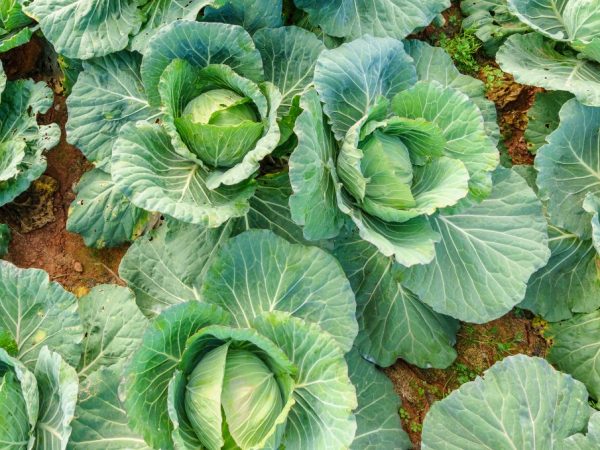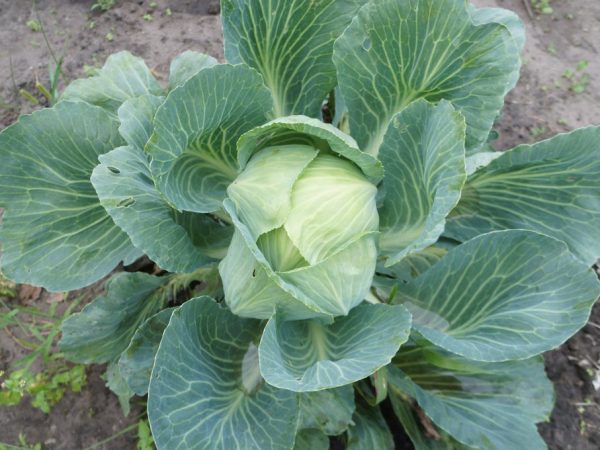Description of mid-season cabbage varieties
Most often, summer residents cultivate mid-season cabbage varieties. The peculiarities of cultivation and the average duration of ripening of the vegetable make it possible to obtain an excellent harvest not only in the regions of the middle lane, but also in Siberia or the Urals. Gardeners in the southern regions plant seeds at intervals of two weeks, and then they grow a double crop over the summer.

Description of mid-season cabbage varieties
Characteristics of mid-season varieties and hybrids
Mid-season white cabbage of most varieties and hybrids does not differ in keeping quality. But the vegetable is good for preserving and preparing salads, as well as for pickling and stewing. Stews, cabbage rolls and fillings in pies, pies and dumplings are delicious. Mid-season cabbage has a juicy and sweet taste. When frying, it emits a lot of liquid, but does not lose its specific aroma, unlike the harvest of early varieties.
White cabbage, belonging to the subspecies of medium, gardeners grow more often than all other varieties. This vegetable has excellent taste and vitamin and mineral composition. The weight of the heads can vary from 1 to 15 kg. All medium kale forks are moderately dense. Medium early plugs can be stored for 60 days,
Among mid-ripening varieties, mid-early and mid-late plant species are distinguished. Hybrids are a separate group. The only distinguishing feature of varieties and hybrids is the shelf life.
Medium early varieties
The most commonly grown mid-ripening cabbage varieties with a medium-early ripening period are:
- Dobrovodskaya. Differs in delicate taste and lack of bitterness. The technical ripeness of the vegetable occurs on the 130th day. Stores well and is suitable for making canned food and salting. The forks are white on the cuts, the outer leaves are light green.
- Megaton. Ripens 100 days after the seeds sprout. Fruits are undemanding to storage and transportation conditions. The seedlings are disease resistant. Individual heads of cabbage can weigh up to 15 kg. The taste of cabbage is sweet.
- Menza. Heads of cabbage of this variety can reach maturity 110 days after the seeds are hatched. The shape of the fruit is spherical. Large forks may have slightly flattened forks. On the cuts, a small stump and leaves tightly attached to it are visible. The taste is high, but the keeping quality of the crop is poor. Growing is difficult, because seedlings need fertile nitrogenous soils.
- Glory 1305. The minimum growing season is 95 days. The yield and keeping quality of the vegetable is high. The fork is dense, its color is from dark green at the root to whitish cream at the top. The fruit tastes sweet. For the formation of a head of cabbage of high mass and large size, abundant watering is needed.
Mid-late varieties

Mid-late varieties can be grown anywhere
Mid-late varieties of cabbage can be cultivated everywhere. The ripening period of the vegetable does not exceed 150 days after the seeds sprout.
The best varieties and their characteristics for growing:
- Present.It is one of the best varieties of white cabbage with a medium ripening period. The fruits are large, light green on the outside. The forks are tight. Stored well.
- The merchant's wife. The vegetable is distinguished by its high taste and snow-white pulp. Suitable for long-term storage in a dry basement. Cultivation is not difficult. The seedlings are resistant to diseases and undemanding to light conditions. The head of cabbage is covered with green leaves on the outside, which can be huge, but the heads of cabbage rarely exceed 3.5 kg. On average, they weigh up to 2 kg.
- Golden hectare. It is one of the least whimsical varieties of mid-season white cabbage. Heads of cabbage are distinguished by their large size and are famous for their excellent taste. The vegetable is suitable for fresh storage and canning.
- Hope. The forks of this type have a spherical shape. On the cut, the leaves are creamy, and the stalk is white. The fruit is easily disassembled into sheets, so it is often used to make stuffed cabbage rolls. From the moment of the first germination of seeds, the technical ripeness of this cabbage variety is reached by 140 days. There is no bitterness in the taste.
- Kashirka 202. The fruit is dense and juicy. The shape of the fork is round. The stump is tall, but hollow and light. The color of the vegetable on the cut is creamy green, the taste is excellent. The only drawback of this variety is its demanding soil, which must be rich in nitrogen.
Mid-season hybrids
It is much easier to grow mid-season cabbage hybrids than varietal plants.
Most Popular Medium Bold Hybrids:
- Midor F1. The head of cabbage is slightly flattened, light green in color. The stump is medium in size. The sheets are elastic and juicy, adhere tightly to each other. Ripens in 140-150 days. The yield is about 12 kg per 1 sq. m.
- Calibro F1. A head of cabbage of a rounded shape, light color. A small stump is visible on the cut. The sheets are thin and juicy. Ripens in 140 days. The yield is 9 kg per 1 sq. m.
- Gloria F1. Head of cabbage is rounded, dark green in color. Leaves in forks of medium size, close tight. The technical ripeness of a vegetable occurs on average 120 days. The yield is 8 kg per 1 sq. m. The hybrid is resistant to fusarium.
- Krautman F1. Plants of this variety are resistant to many cabbage diseases. Can be stored for a long time. Can form giant forks with proper care. The stump in them is small, and the sheets are elastic and thick, tightly fitting to each other. The heads of the hybrid are tight and heavy, regardless of size.
- Foreman F1. Fruits of this hybrid are suitable for long-term storage. The vegetable retains its juiciness for 5 months. Fork ripening period is 120 days. On the cuts, the vegetable is snow-white, the stump is short, but wide. The seedlings are drought tolerant.
Conclusion
In order to grow an excellent harvest of mid-season white cabbage, you need to choose the best varieties. Important characteristics for every gardener are the weight of the heads, their taste and shelf life.
The quality of the crop is influenced by the mineral composition of the soil, as well as the timeliness of watering the plants. Residents of regions with short summers also need to carefully consider the requirements of the temperature regime and the length of daylight hours.


